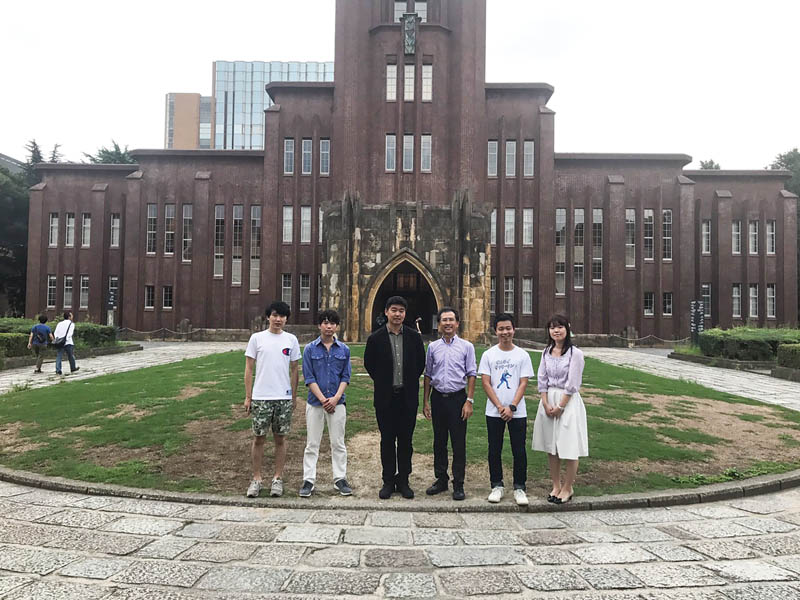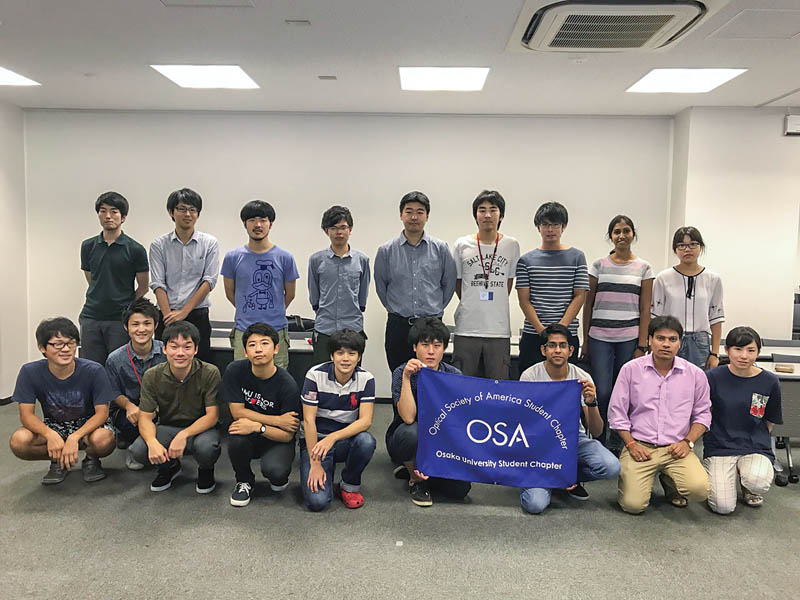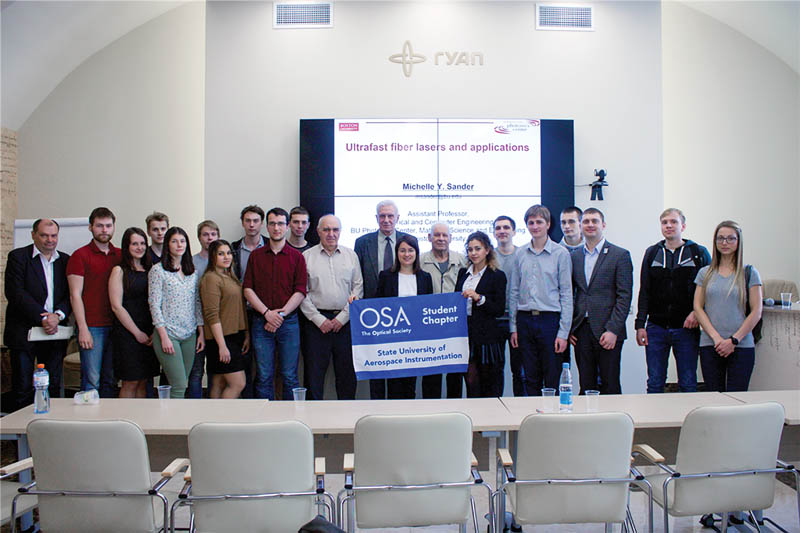Not-So-Secret Societies: What Professional Societies Can Do For Undergrads
Fall
2017
Feature
Not-So-Secret Societies: What Professional Societies Can Do For Undergrads
James Merrick, Managing Editor; Additional reporting contributed by Kendra Redmond and Rachel Kaufman

SPS provides important opportunities for physics students to connect locally, regionally, nationally, and beyond. You can join the even larger community of physicists by participating in one of the many physics-related professional societies, from the Acoustical Society of America to the Optical Society. Most of these are global societies that consist of students, post-docs, and professionals in academia and industry.
Professional societies differ in size, structure, topical areas, and benefits, but there are a few key components—scientific meetings, opportunities for professional growth and development, advocacy, and a community of potential collaborators, friends, and mentors.
By engaging in these broader professional societies, SPS students have the opportunity to network, learn from, and attend meetings with thousands of professional physicists. They can learn about emerging areas of research, attend talks by Nobel laureates, and present their research to audiences that extend far beyond their department and include potential collaborators. SPS students also can engage with their peers who share their passions through these unique professional opportunities in ways that may not be as accessible on a typical undergraduate campus.
One of the main benefits to joining a professional society is that undergraduates are exposed to technical areas that may not be represented on their campus, says Michelle Sander, an assistant professor in electrical and computer engineering at Boston University and a student ambassador for The Optical Society (OSA). “That can be helpful because it's somewhat random how [students] end up getting engaged in an undergraduate research project.”
OSA is an international society that promotes the generation, application, archiving, and dissemination of knowledge in optics and photonics. Through student chapters and a newly formed student ambassadors program, the society aims to help students develop professional skills, learn more about research and career opportunities within optics and photonics, and network with the community.
Yoshitomo (Yoshi) Okawachi, a research scientist in the Gaeta Group at Columbia University and an OSA student ambassador, has developed some online content for OSA, including a video on networking at conferences. “Whether as a postdoc or as a professor or as a research scientist or someone from industry, [the OSA members] have a wide range of backgrounds,” he says. By sharing their experiences, they aim to help students develop and expand the community.
SPS students have the opportunity to attend meetings of professional physics societies, like OSA, sometimes with financial support from SPS National. Travel and reporter awards are offered to SPS students in an effort to encourage attendance at professional society meetings. Students can use travel awards to attend and present their research at professional society meetings. Reporter awards are also available to SPS students who wish to attend a professional society meeting and provide a report about their experience. Both awards provide funding of up to $200 to support a student’s meeting attendance. To review eligibility requirements and other pertinent information, read more at www.spsnational.org/awards/travel and www.spsnational.org/awards/reporter.
As evidenced by articles written by SPS reporters, www.spsnational.org/meetings/student-experiences, professional society meetings can change the course of one’s career. Last spring, Ithaca College SPS student Andrew Polcari attended the American Physical Society March Meeting as an SPS reporter. “I had no idea how connected the whole physics community is,” says Polcari. “I plan to immerse myself in knowing more and more people, whether they are students, professors, or SPS board members.”
Several professional societies offer mentoring opportunities to students and young professionals, such as the American Physical Society’s National Mentoring Community (NMC) that facilitates and supports mentoring relationships between African American, Hispanic American, and Native American undergraduate physics students and local physics mentors. Other mentoring opportunities are based on research interests.
If traveling to a national meeting presents a challenge, many professional societies hold regional meetings and local meetings that allow for more opportunities to engage with potential collaborators and professionals. Last year, Olivia A. Krohn of California State University, Fresno, traveled to the American Physical Society (APS) Far West Section Meeting. In understanding the importance of regional meetings, she conveys, “Although not as large or epic as an [APS] April Meeting, or so specialized and focused as a divisional meeting, this sectional meeting had a special charm in staying close to home.”
Many professional societies have become increasingly focused on undergraduates in recent years, creating online content, training sessions, and programs such as the OSA student ambassadors. “Having specific liaisons at this stage to help people in terms of the professional development side [is new],” says Sanders. “Five to ten years ago there was not as much emphasis on the professional development.”
After your undergraduate career comes to an end, professional physics societies can remain a valuable part of your professional and personal life. Many societies include programming and resources for graduate students, early career professionals, and beyond.


------------------
Get connected!
Undergraduate SPS students are eligible for free membership in any two of the ten Member Societies within the American Institute of Physics umbrella. In addition, SPS members can join the National Society of Black Physicists and the National Society of Hispanic Physicists for free. For details on these partnerships, visit www.spsnational.org/about/membership/free-ms-membership. Students interested in areas not represented by these societies should explore memberships in other societies, too. Many other professional societies have discounted or free student memberships.
